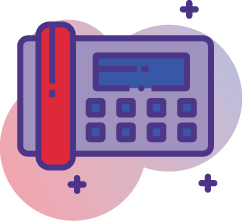 Have you ever stayed at work to get a rush job done only to be told that a last-minute extension was granted? Have you had a co-worker or supervisor take credit for work you did? How about having someone dump all the work on your lap because “they don’t have time?”
Have you ever stayed at work to get a rush job done only to be told that a last-minute extension was granted? Have you had a co-worker or supervisor take credit for work you did? How about having someone dump all the work on your lap because “they don’t have time?”
Getting angry at work is common. We know we aren’t supposed to get angry. We know we are supposed to be in better control of our emotions. We understand all the talk about being professional. It still happens.
[ctt template=”3″ link=”B29p3″ via=”yes” ]Anger is one letter short of DANGER (Author Unknown). Read here what to do when you get angry at work[/ctt]
Anger can be a self-destructive emotion when it is out of proportion to the situation or when it is expressed inappropriately. It seems that every time you open a computer or watch the news, we see yet another person who has overreacted to a situation and used violence to deal with their anger.
Anger has been called an adaptive emotion, which means that it is often a red flag, hiding other emotions such as fear or insecurity. That’s why it is crucial to be conscious of our anger. It may be (and probably is) hiding other emotions that are just as important to identify, and potentially easier to deal with.
Most of us were taught we are not allowed to be angry, but we weren’t taught what to do about it when we are.
Last night, while having dinner with friends, Ann was telling us a story about how her four-year-old granddaughter got up from the dinner table and went to sit on the stairs. When asked why, she explained that she was angry at Daddy and needed a moment to cool down. At school, they taught her that when she wasn’t “green” (meaning calm and relaxed), she needed to find a way to calm herself down. She explained that she was “red’ at the moment and knew the best thing was to step away, take a few calming breaths, and get back to green. From a four-year-old!
Brilliant. A four-year-old can articulate and deal with a frustrating situation better than most 40-year-olds!
What makes you angry? Does a particular person or situation push your buttons? Knowing where your buttons are can help you avoid situations or prepare yourself because you see them coming.
[ctt template=”3″ link=”aW15a” via=”yes” ]Do you know what makes you angry? By being aware of your hot buttons you can prepare yourself when you see them coming.[/ctt]
Here are some techniques to handle your anger before it gets out of control:
– Keep a written log of your anger for a week. Include what makes you angry, who makes you angry, how you express it, your anger’s duration, and any thoughts that accompany it.
By being aware of your anger, you can learn to deal with it directly. When we are not mindful of our anger, we run the risk of taking our anger out on people who have nothing to do with the situation.
– Take several deep breaths before responding to the situation. We need to calm our heart rate, our pulse, and our minds so that we don’t further escalate the situation.
– Ask yourself, “Is it worth getting upset about?” If it truly is, ask yourself what is the best way for you to deal with this situation. Should you back away and respond tomorrow? Should you speak up in the moment? What should you say? How should you say it?
Everyone gets angry from time to time. The key is not to ignore it – rather, to accept it, deal with it appropriately, and learn from it.
I like the approach of walking away from the situation to get myself back to “green.” When I’m “green,” I have better clarity on what I should say or do. When I’m “red,” I am emotional and not professional.
Hope you’re having a green day today!
Article By, Rhonda Scharf









